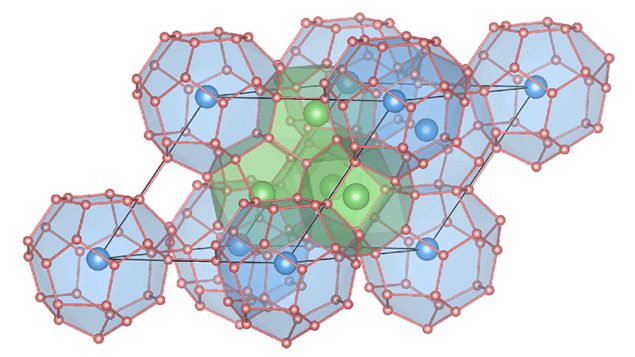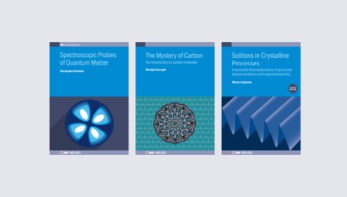
A material that remains a superconductor when heated well beyond the boiling point of water has been predicted by physicists in China. Hanyu Liu, Yanming Ma and colleagues at Jilin University have calculated that lithium magnesium hydride will superconduct at temperatures as high as 473 K (200 °C).
The catch is that the hydrogen-rich material must be crushed at 250 GPa, which is on par with pressures at the centre of the Earth. While such a pressure could be achieved in the lab, it would be very difficult to perform an experiment to verify the prediction. The team’s research could, however, lead to the discovery of more practical high-temperature superconductors.
Superconductors are materials that, when cooled below a critical temperature, will conduct electricity with zero resistance. Most superconductors need to be chilled to very low temperatures, so the holy grail of superconductivity research is to find a substance that will superconduct at room temperature. This would result in lossless electricity transmission and boost technologies that rely on the generation or detection of magnetic fields.
Atomic arrangements
Hydrogen-rich materials could provide a route to room-temperature superconductivity because they resemble metallic hydrogen – which is expected to exist at pressures greater than about 400 GPa. While metallic hydrogen has yet to be reliably made in the lab, it is predicted to be a superconductor at room temperature. The idea behind using hydrides instead of pure hydrogen is that the hydrogen atoms in some hydrides are arranged such that high-temperature superconductivity can occur at significantly lower pressures.

Could high-pressure hydrides be high-temperature superconductors?
A key challenge facing physicists looking for suitable hydrides is predicting which materials have the desired crystal structures to support high-temperature superconductivity. In 2014, Liu, Ma and colleagues came up with a computer simulation that can predict the structures of hydrides at high pressures. This led to the experimental measurement of superconductivity in hydrogen sulphide at 203 K and 150 GPa in 2015. Then the simulation identified the current record holder lanthanum hydride, which has been measured as a superconductor up to about 250 K (-23 °C) when subjected to 170 GPa.
Now the team has extended its search to include ternary hydrides — substances such as lithium magnesium hydride that comprise three different atomic species. While the high-pressure structures of these materials can be harder to predict than binary compounds, the presence of a third atom increases greatly the number of materials that can be investigated.
In the case of lithium magnesium hydride, the team calculates that donor electrons from the lithium atoms prevent the material from breaking-down at high pressures. Describing their work in Physical Review Letters, they say that using donor electrons to stabilize structure at high pressures could pave the way for exploring the properties of more complicated ternary and quaternary hydrides that are high-temperature superconductors.



